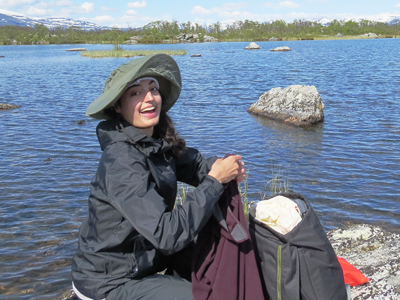Our geo-science and environmental science students hail from a wide range of institutions and disciplines. All are interested in scientific research and are participating in our study of biogeochemical processes in northern upland and wetland ecosystems.
2014 Students
 |
|
Laura Logozzo
CUNY City College of New York
Environmental Science major
Hej! I'm Laura Logozzo, an undergraduate Earth and Atmospheric Sciences major at the City College of New York (CCNY) in New York City. I was born and raised in Brooklyn with two younger brothers. I attended Fiorello H. LaGuardia High School (also known as "The Fame School"), where I majored in fine arts. After taking an AP environmental science class my senior year of high school, I decided that I wanted continue my studies in the subject, with the hopes of one day being able to conduct research in the field. In addition to taking classes at CCNY, I am also working in two labs on campus assisting in research. One project is looking to identify and analyze the effects of antibiotics, specifically Narasin, on the nitrogen cycle in soils. The other project I am working on focuses on determining the titanium concentration in quartz from meta-chert taken from the Alpine Fault in New Zealand using CL images.
My research project in the NERU program is looking at the lake characteristics of twenty lakes in the Stordalen Mire to identify any characteristics that may have an impact on methane emissions in the region. The key lake components relevant to my project are grain size and composition of lake sediment. Since methane is able to adsorb to clay particles and organic matter (OM) when the methane forms in contact with the sediment and OM, I hope to be able to use methane adsorption as an indicator of areas of methane formation in lakes. This could help shed light on the source of methane in lakes and the common lake characteristics needed for methane formation to occur.
|

